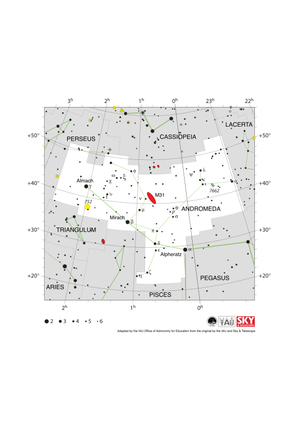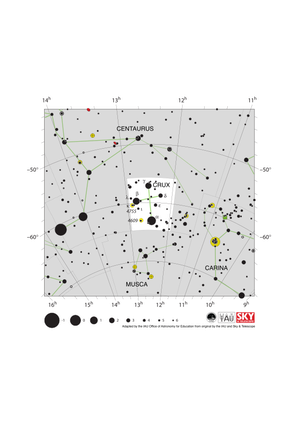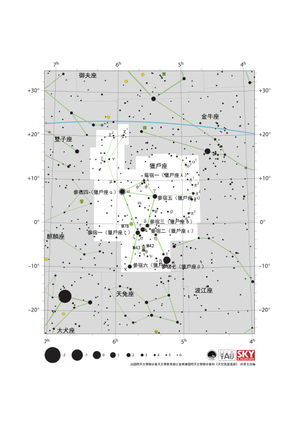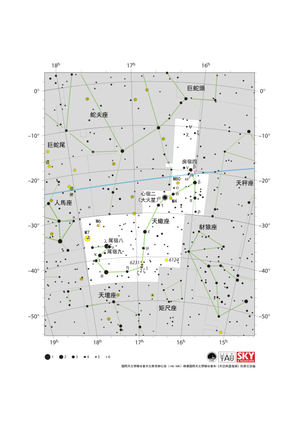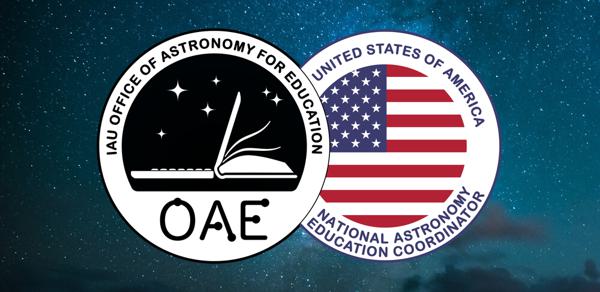Glossary term: 赤經(RA)
Description: 赤經是赤道坐標系中的兩個坐標之一(另一個是赤緯),天文學家用以定義天體在天空中的位置。從地球看去,天空中的所有不同位置共同構成了一個以地球為中心的遙遠球面,稱為天球。天空中地球赤道正上方的點構成了天球上的天赤道,地理北極正上方的點就是北天極,而地理南極正上方的點就是南天極。就像地理學家在地球表面定義地理經緯度一樣,天文學家也可以在天球上定義經緯度。但如果我們將天體的經度坐標選擇為其正下方的點在地球表面上對應的地理經度值,那麼恆星的坐標值就會隨著地球的自轉而改變。為避免這一點,赤道坐標系的赤經是相對於一條不隨地球自轉改變,而相對於恆星固定不變的“子午線”來測量的。這條子午線的地位與地球上的格林尼治子午線類似。這條子午線與天赤道的交點定義為太陽從南天球運動到北半球的視軌跡與天赤道相交的確切位置。由此定義的經度稱為赤經,其數值自西向東增加。如果在地球上向天赤道看去,則隨著地球的自轉,所有的赤經值都會在約24小時內依次飛掠而過。因此,赤經通常用時間值來表示,用24小時來代替圓周的360度。赤緯是第二個赤道坐標,與地理緯度相對應。地球自轉軸的輕微擺動被稱為歲差,它使赤道坐標系——恆星和其他天體的赤經和赤緯——隨時間發生變化,但這種變化是非常輕微緩慢的。
Related Terms:
See this term in other languages
Term and definition status: The original definition of this term in English have been approved by a research astronomer and a teacher The translation of this term and its definition is still awaiting approval
This is an automated transliteration of the simplified Chinese translation of this term
The OAE Multilingual Glossary is a project of the IAU Office of Astronomy for Education (OAE) in collaboration with the IAU Office of Astronomy Outreach (OAO). The terms and definitions were chosen, written and reviewed by a collective effort from the OAE, the OAE Centers and Nodes, the OAE National Astronomy Education Coordinators (NAECs) and other volunteers. You can find a full list of credits here. All glossary terms and their definitions are released under a Creative Commons CC BY-4.0 license and should be credited to "IAU OAE".
If you notice a factual or translation error in this glossary term or definition then please get in touch.
Related Diagrams
Andromeda Constellation Map
Credit: Adapted by the IAU Office of Astronomy for Education from the original by IAU/Sky & Telescope
License: CC-BY-4.0 Creative Commons 姓名標示 4.0 國際 (CC BY 4.0) icons
Crux Constellation Map
Credit: Adapted by the IAU Office of Astronomy for Education from the original by IAU/Sky & Telescope.
License: CC-BY-4.0 Creative Commons 姓名標示 4.0 國際 (CC BY 4.0) icons
獵戶座星圖
Credit: 由國際天文學聯合會天文教育辦公室根據國際天文學聯合會/《天空與望遠鏡》的原文改編
License: CC-BY-4.0 Creative Commons 姓名標示 4.0 國際 (CC BY 4.0) icons
天秤座星圖
Credit: 國際天文學聯合會天文教育辦公室(IAU OAE)根據國際天文學聯合會和《天空與望遠鏡》的原文改編
License: CC-BY-4.0 Creative Commons 姓名標示 4.0 國際 (CC BY 4.0) icons
天蠍座星圖
Credit: 國際天文學聯合會天文教育辦公室(IAU OAE)根據國際天文學聯合會和《天空與望遠鏡》的原文改編
License: CC-BY-4.0 Creative Commons 姓名標示 4.0 國際 (CC BY 4.0) icons
